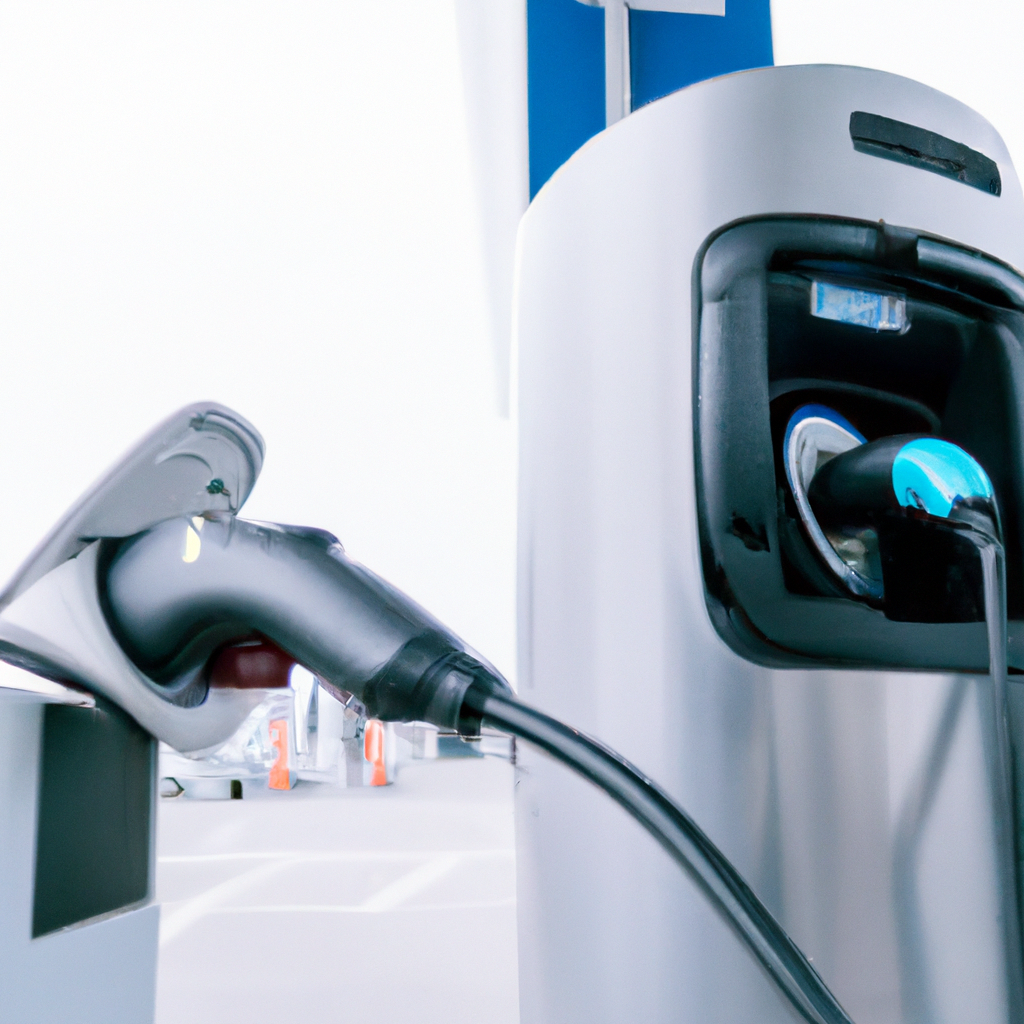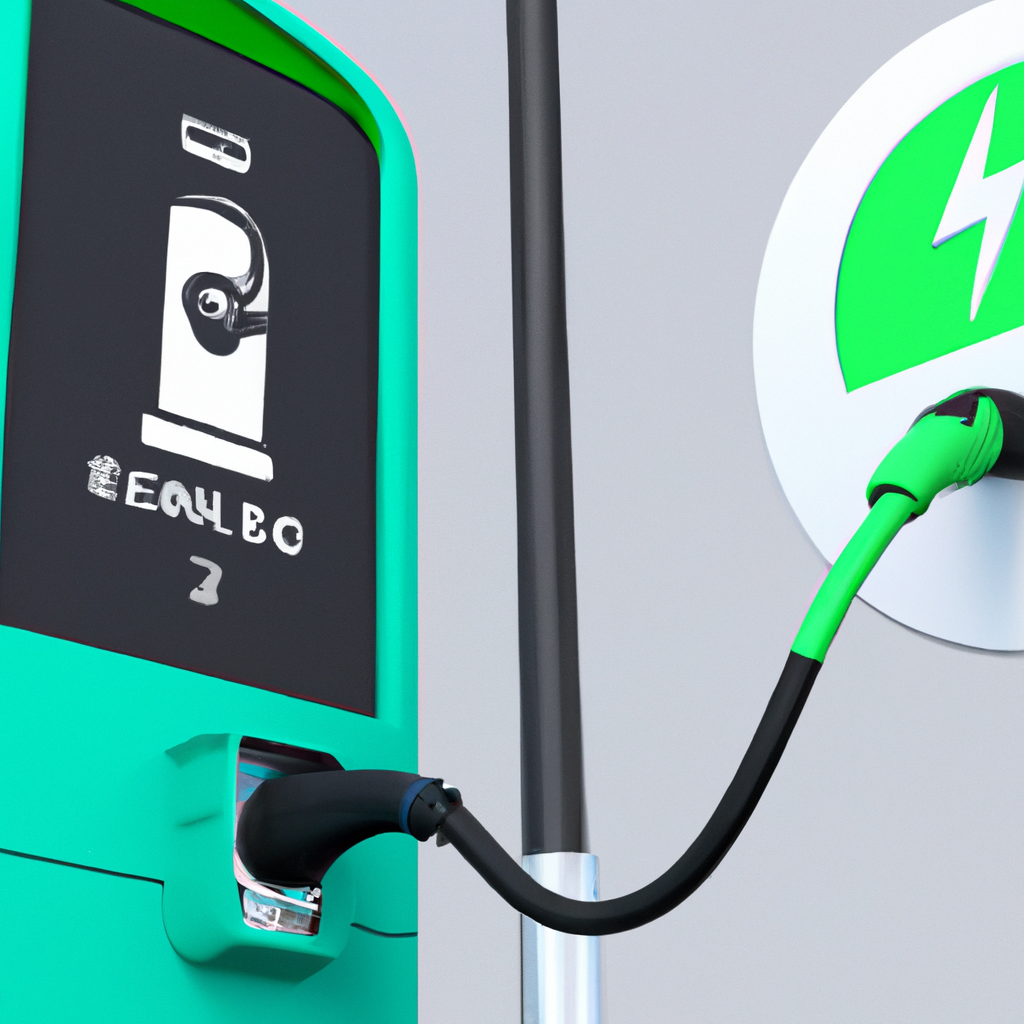The Charging Infrastructure Challenge: Expanding Accessibility
September 27, 2023 | by Jacob Kang

Imagine a world where electric vehicles (EVs) dominate the roads, reducing emissions and creating a sustainable future. While this vision seems promising, one significant challenge stands in the way: the lack of a robust charging infrastructure. In order to fully embrace the potential of EVs, it is crucial to expand the accessibility of Charging stations. This article explores the charging infrastructure challenge and the importance of expanding accessibility to propel the widespread adoption of EVs. Through innovative solutions and collaboration, we can pave the way towards a greener future.
Importance of Charging Infrastructure
Accelerating adoption of EV Cars
The availability of a robust charging infrastructure is crucial for accelerating the adoption of electric vehicles (EVs). Without accessible and convenient charging stations, potential EV owners may be hesitant to make the switch from traditional gasoline-powered vehicles. By providing a comprehensive network of charging stations, the barriers to entry for EV ownership are significantly reduced. This, in turn, encourages more people to embrace electric mobility and contribute to the transition to a more sustainable future.
Enabling long-distance travel
One of the key advantages of a well-developed charging infrastructure is its ability to enable long-distance travel in electric vehicles. With a network of fast charging stations strategically located along major highways and intercity routes, EV owners can embark on road trips with peace of mind. They can recharge their vehicles quickly and continue their journey, overcoming the previous limitations of EVs’ range. This not only promotes the convenience of electric mobility but also eliminates the fear of being stranded with a depleted battery.
Addressing range anxiety
Range anxiety, the fear of running out of battery power while driving, is a significant concern for many potential EV owners. However, a comprehensive charging infrastructure effectively addresses this anxiety. With a sufficient number of charging stations spread across residential areas, workplaces, shopping centers, and public spaces, EV owners can confidently drive knowing that they can easily find a charging point whenever needed. By alleviating range anxiety, the charging infrastructure plays a vital role in boosting the confidence and uptake of electric vehicles.
Current Charging Infrastructure Landscape
Types of charging stations
The charging infrastructure landscape encompasses various types of charging stations to cater to the diverse needs of electric vehicle owners. These include Level 1, Level 2, and DC fast charging stations. Level 1 charging stations provide a standard power outlet and are primarily used for overnight charging at home. Level 2 charging stations offer faster charging speeds and are commonly found in residential areas, workplaces, and commercial spaces. DC fast charging stations provide the fastest charging speeds and are strategically located along highways and major travel routes, allowing for quick top-ups during long journeys.
Number and distribution of charging stations
The number and distribution of charging stations play a significant role in the accessibility and convenience of electric vehicle charging. Currently, the charging infrastructure is rapidly expanding, with an increasing number of stations being installed in urban, suburban, and rural areas. To ensure widespread availability, charging stations should be strategically located to cover a broad geographic area and cater to the needs of both urban dwellers and those in remote locations. The distribution of charging stations should take into consideration factors such as population density, travel patterns, and existing transportation infrastructure.
Availability of fast charging stations
Fast charging stations, also known as DC fast chargers, are crucial for enabling long-distance travel and reducing charging times. These stations utilize higher voltage and power levels, allowing EVs to charge at a much faster rate compared to Level 1 or Level 2 stations. The availability of fast charging stations along major highways and intercity routes is essential to ensure that EV owners can quickly recharge their vehicles during long journeys. The charging infrastructure landscape should prioritize the installation and expansion of fast charging stations to address the needs of both local commuters and long-distance travelers.

Barriers to Expanding Charging Infrastructure
High installation costs
One of the major barriers to expanding the charging infrastructure is the high installation costs associated with building charging stations. The cost of equipment, electrical infrastructure upgrades, and construction can be significant, especially for fast charging stations. This financial burden makes it challenging for private businesses and organizations to invest in and operate charging stations, especially in areas with low demand or limited potential for profitability. Addressing high installation costs requires innovative financing models, incentives, and collaborative efforts between the public and private sectors.
Limited grid capacity
The expansion of the charging infrastructure must also consider the limitations of the existing power grid. Charging multiple electric vehicles simultaneously can put a strain on the electrical system, potentially causing power outages or destabilizing the grid. Therefore, ensuring that the grid has sufficient capacity to support the increasing demand for electricity from charging stations is crucial. This may involve infrastructure upgrades, grid modernization initiatives, and strategic planning to optimize load management and distribution.
Complex permitting and regulations
Navigating through the complex permitting and regulatory process is another challenge in expanding the charging infrastructure. Building and operating charging stations often require approvals from multiple government agencies and compliance with various regulations, codes, and standards. The bureaucratic hurdles and lengthy approval timelines can significantly delay the installation of charging stations. Streamlining the permitting process and establishing clear guidelines and standards for charging infrastructure development can help overcome these barriers and expedite the expansion of the charging network.
Government Initiatives and Policies
Financial incentives for building charging stations
To overcome the barriers and promote the expansion of the charging infrastructure, governments around the world have implemented financial incentives for building charging stations. These incentives can take the form of grants, tax credits, or subsidies, which help offset the high installation costs and provide financial support to private businesses, organizations, and individuals. By providing economic incentives, governments encourage stakeholders to invest in charging infrastructure, thereby accelerating its deployment and accessibility.
Streamlining permitting and regulations
Governments play a crucial role in streamlining the permitting process and regulations associated with charging infrastructure development. By creating clear and standardized guidelines, reducing bureaucratic hurdles, and facilitating collaboration between different government agencies, the installation and operation of charging stations can be expedited. Streamlined permitting and regulations minimize delays and uncertainties while providing a supportive environment for private businesses and organizations to invest in charging infrastructure.
Investment in grid infrastructure
As the charging infrastructure expands, governments need to invest in the grid infrastructure to support the increasing demand for electricity. This may involve upgrading transmission and distribution systems, implementing smart grid technologies, and integrating renewable energy sources. By investing in the grid infrastructure, governments can ensure the stability, reliability, and resilience of the electrical system, enabling the widespread adoption of electric vehicles and the seamless operation of charging stations.

Technological Advancements
Wireless charging technology
Wireless charging technology, also known as inductive charging, holds the potential to revolutionize the charging experience for electric vehicle owners. With wireless charging, EVs can be charged without the need for physical cable connections. Instead, charging pads or plates are embedded in the ground, and the vehicle is charged by simply parking over the charging pad. This technology offers increased convenience, eliminates the hassle of plugging and unplugging, and enhances the accessibility of charging points. As wireless charging technology continues to advance, it has the potential to reshape the charging infrastructure landscape and further accelerate the adoption of electric vehicles.
Battery swapping stations
Battery swapping stations provide an alternative to traditional charging stations by allowing EV owners to exchange their depleted batteries with fully charged ones. This technology significantly reduces charging times, as the battery swap process takes only a few minutes. Battery swapping is particularly beneficial for electric vehicles with limited range or those used for commercial purposes. By incorporating battery swapping stations into the charging infrastructure, EV owners can enjoy the convenience of quick battery exchanges, further reducing range anxiety and promoting the widespread adoption of electric vehicles.
Smart charging solutions
Smart charging solutions leverage advanced technologies and algorithms to optimize the charging process, manage energy usage, and minimize the impact on the electrical grid. These solutions can prioritize charging during off-peak hours when electricity demand is lower, balance the load across multiple charging stations to avoid grid overload, and integrate renewable energy sources for sustainable charging. Smart charging solutions not only enhance the efficiency and reliability of the charging infrastructure but also contribute to grid stability and support the integration of renewable energy into the electrical system.
Collaborations and Partnerships
Automaker collaboration with charging network providers
Collaborations between automakers and charging network providers are vital for the seamless integration and expansion of the charging infrastructure. By working together, automakers can ensure that their electric vehicles are compatible with existing charging stations and networks. Additionally, automakers can collaborate with charging network providers to expand the charging infrastructure, optimize charging experiences for their customers, and promote the widespread adoption of electric vehicles.
Public-private partnerships for charging infrastructure development
Public-private partnerships play a critical role in driving the development and expansion of the charging infrastructure. By joining forces, governments and private entities can pool their resources, expertise, and networks to accelerate the installation of charging stations and improve their accessibility. Public-private partnerships can leverage the strengths of each collaborator, combining public funding, regulatory support, and private sector innovation to overcome barriers and achieve widespread charging infrastructure deployment.
Collaboration between utilities and charging infrastructure companies
Utilities and charging infrastructure companies can form collaborations to ensure the efficient integration of charging stations into the electrical grid. Utilities can provide expertise in grid planning, load management, and infrastructure upgrades, while charging infrastructure companies contribute to the installation and operation of the stations. This collaboration enables the seamless integration of charging infrastructure with the electrical system, fosters grid stability, and supports the growth of the electric vehicle market.

Integration with Renewable Energy Sources
Solar-powered charging stations
Solar-powered charging stations offer a sustainable and environmentally friendly approach to electric vehicle charging. By harnessing energy from the sun, these stations generate electricity to power EVs without relying on the conventional power grid. Solar panels mounted on the charging stations or nearby structures capture solar energy, which is then converted into electricity. Integrating solar power into the charging infrastructure reduces the carbon footprint of electric vehicles, supports the growth of renewable energy, and enhances the sustainability of the transportation sector.
Utilizing excess renewable energy for charging
Renewable energy sources, such as wind and solar, often generate more electricity than immediate demand. This excess renewable energy can be harnessed and utilized for charging electric vehicles, reducing the reliance on fossil fuel-based power generation. Smart charging solutions can be employed to optimize charging times and prioritize the consumption of excess renewable energy. By integrating charging infrastructure with renewable energy sources, the charging process becomes more environmentally friendly, helping to mitigate climate change and the overall impact of transportation on the environment.
Integration with smart grid systems
The integration of charging infrastructure with smart grid systems enables more efficient and sustainable energy management. Smart grid technology allows charging stations to communicate with the electrical grid, exchanging information about energy demand, pricing, and renewable energy availability. Charging stations can adjust their charging rates based on grid conditions, optimize energy usage, and contribute to load balancing. This integration ensures that the charging infrastructure operates in harmony with the grid, maximizes the use of renewable energy, and minimizes the strain on the electrical system.
Challenges in Urban Areas
Limited space for charging infrastructure installation
Urban areas often face limited space for the installation of charging infrastructure. The availability of parking spaces, particularly in densely populated cities, can be a significant challenge. To overcome this obstacle, innovative solutions can be explored, such as installing charging stations in underground parking facilities, utilizing curbside charging stations, or integrating charging infrastructure into existing urban structures. Efficient utilization of available space is crucial to ensure that urban dwellers have convenient access to charging points, promoting the adoption of electric vehicles in cities.
Ensuring access for apartment dwellers and urban residents
Apartments and condominiums in urban areas pose a unique challenge for charging infrastructure. Many residents in these types of dwellings do not have access to dedicated parking spaces or garages, making it difficult to install personal charging stations. However, solutions such as shared charging facilities within apartment complexes, on-street charging stations near residential buildings, or partnerships with commercial parking garages can help ensure charging accessibility for apartment dwellers and urban residents. Addressing the charging needs of this segment of the population is essential to achieve widespread electric vehicle adoption in urban areas.
Demand management in densely populated areas
Densely populated urban areas place a significant strain on the electrical grid. The concentration of electric vehicles in these areas can further exacerbate the demand for electricity during peak hours, potentially overloading the grid and causing stability issues. Implementing demand management strategies, such as time-of-use pricing, load balancing, and smart charging algorithms, can help mitigate the impact of high charging demand. By optimizing charging schedules and incentivizing off-peak charging, the charging infrastructure can coexist with the existing electrical infrastructure in urban areas.

Challenges in Rural and Remote Areas
Lack of existing infrastructure
Rural and remote areas often lack the necessary electrical infrastructure to support the installation and operation of charging stations. Limited access to electricity or insufficient grid capacity can pose significant challenges to expanding the charging infrastructure in these areas. To overcome this hurdle, standalone charging solutions, such as solar-powered charging stations with energy storage or portable charging systems, can be deployed. These solutions enable flexible and off-grid charging capabilities, ensuring that electric vehicle owners in rural and remote areas can access charging facilities conveniently.
Long distances between charging stations
Another challenge in rural and remote areas is the long distances between charging stations. Sparse population density and vast geographical landscapes make it difficult to establish a widespread network of charging points. To address this challenge, strategic planning and collaboration between key stakeholders, such as governments, utilities, and private businesses, are essential. By identifying common travel routes, popular destinations, and areas of high electric vehicle usage, charging stations can be strategically located to provide adequate coverage and ensure that EV owners can travel with confidence.
Power grid limitations
Rural and remote areas often face power grid limitations, including limited grid capacity and unstable electricity supply. These limitations can pose significant challenges for charging infrastructure development. Implementing grid enhancements, such as upgrading transmission and distribution infrastructure, installing energy storage systems, and implementing microgrid solutions, can help overcome these limitations. By strengthening the power grid in rural and remote areas, the expansion of the charging infrastructure becomes more feasible, promoting electric vehicle adoption and accessibility in these regions.
Private Sector Initiatives
Expansion of private charging networks
Private charging networks operated by businesses, organizations, and charging service providers play a vital role in expanding the charging infrastructure. These private networks complement public charging stations by providing additional charging points in strategic locations. They often cater to specific user groups or cater to high-demand areas. The expansion of private charging networks requires collaboration between stakeholders, innovative business models, and investments to meet the growing demand for electric vehicle charging.
Integration with retail and commercial spaces
The integration of charging infrastructure with retail and commercial spaces offers a mutually beneficial opportunity. Retailers and business owners can attract and retain customers by providing convenient access to charging stations while individuals can charge their vehicles while shopping or conducting business. This integration not only enhances the convenience and accessibility of charging stations but also contributes to the sustainability and eco-friendly image of businesses. By incentivizing and supporting the installation of charging stations in retail and commercial spaces, the private sector actively contributes to the expansion of the charging infrastructure.
Investment in charging infrastructure startups
The private sector’s investment in charging infrastructure startups plays a crucial role in driving innovation, promoting growth, and expanding the charging network. Startups often bring fresh ideas, technological advancements, and entrepreneurial spirit to the industry, spurring the development of new business models and solutions. By investing in charging infrastructure startups, the private sector supports the deployment of innovative charging technologies, accelerates the expansion of the charging network, and enhances the accessibility of charging facilities for electric vehicle owners.
Overall, the charging infrastructure plays a central role in promoting the adoption, accessibility, and convenience of electric vehicles. As governments, businesses, and stakeholders collaborate and innovate, the challenges associated with expanding the charging infrastructure can be overcome. Through financial incentives, streamlined regulations, technological advancements, and public-private partnerships, the charging infrastructure landscape continues to evolve, facilitating the transition towards a sustainable and electric mobility future.

RELATED POSTS
View all


